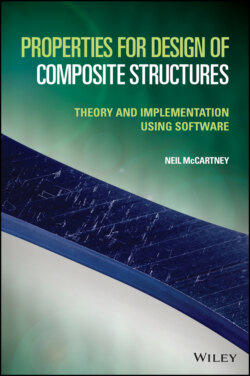Читать книгу Properties for Design of Composite Structures - Neil McCartney - Страница 56
3.6 Bounds for Two-phase Isotropic Composites
ОглавлениеIt follows from Hashin and Shtrikman [5], and the review by Hashin [1], that bounds for the effective thermal conductivity of a two-phase composite, valid for arbitrary reinforcement geometries leading to statistically isotropic effective properties, may be expressed in the form
(3.60)
(3.61)
Walpole [7, Equation (26)] has derived rigorous bounds for the effective bulk modulus, which can for a two-phase composite be expressed in the following two equivalent forms
(3.62)
(3.63)
(3.64)
On using the bounds (3.62) for the bulk modulus, it can be shown that the bounds for the effective thermal expansion are such that
if (kp−km)(μp−μm)(αp−αm)≥0:
(3.65)
if (kp−km)(μp−μm)(αp−αm)≤0:
(3.66)
Walpole [7, Equation (26)] has derived rigorous bounds for the effective shear modulus, which can, for an isotropic two-phase composite, be expressed in the following form having the same structure as the result (3.59)
(3.67)
where μmin* and μmax* are defined by (3.49). The structure of (3.67) is identical to that given by Torquato [2, Equations (21.73)–(21.75)].
To conclude this section summarising results, it is useful to provide the relationships between the bulk and shear moduli and the elastic constants which are more frequently encountered in applications. It follows from (2.208) that the effective Young’s modulus Eeff and effective Poisson’s ratio νeff for an isotropic composite are given by
(3.68)
